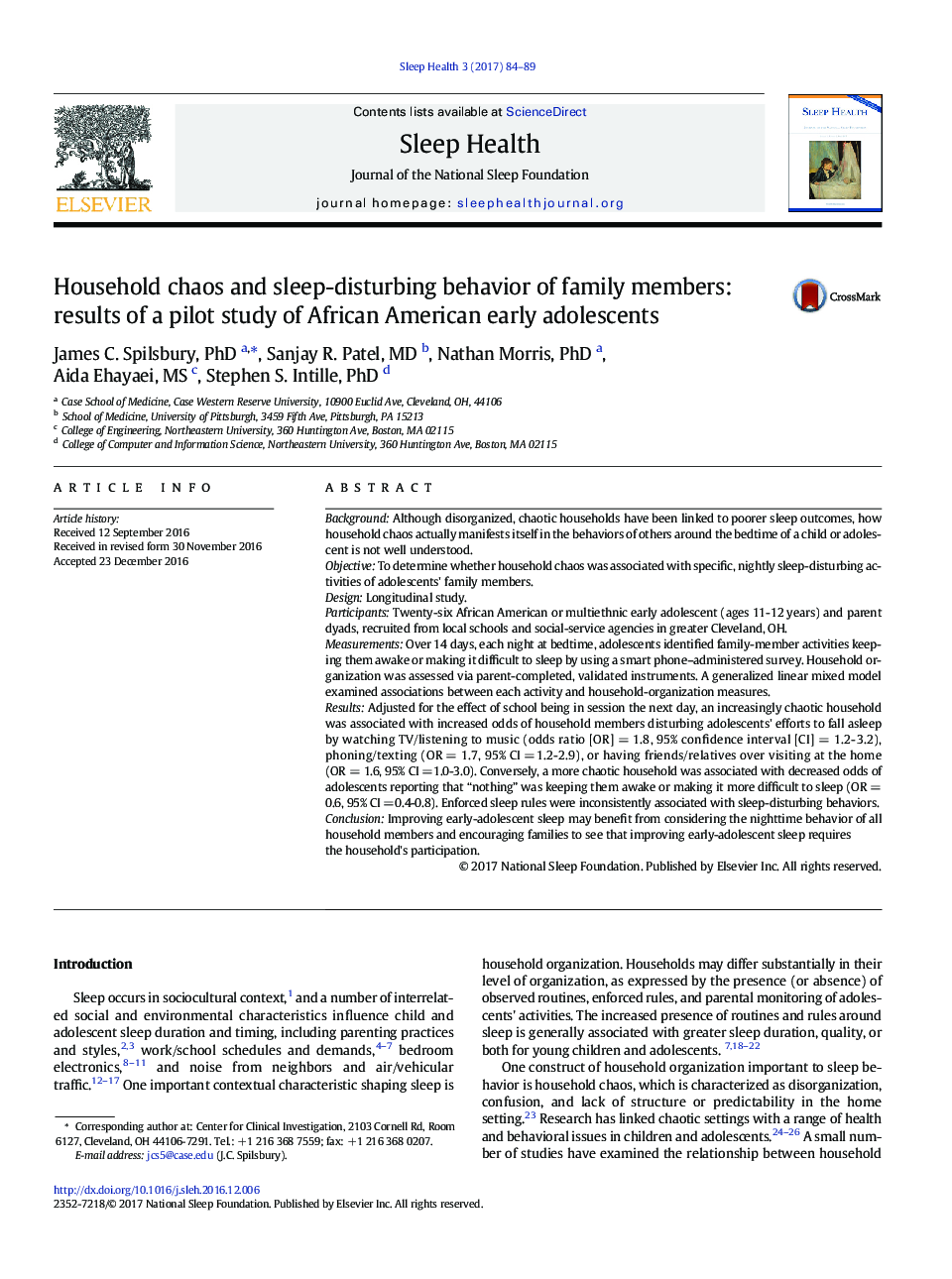| کد مقاله | کد نشریه | سال انتشار | مقاله انگلیسی | نسخه تمام متن |
|---|---|---|---|---|
| 5039512 | 1370355 | 2017 | 6 صفحه PDF | دانلود رایگان |
BackgroundAlthough disorganized, chaotic households have been linked to poorer sleep outcomes, how household chaos actually manifests itself in the behaviors of others around the bedtime of a child or adolescent is not well understood.ObjectiveTo determine whether household chaos was associated with specific, nightly sleep-disturbing activities of adolescents' family members.DesignLongitudinal study.ParticipantsTwenty-six African American or multiethnic early adolescent (ages 11-12 years) and parent dyads, recruited from local schools and social-service agencies in greater Cleveland, OH.MeasurementsOver 14 days, each night at bedtime, adolescents identified family-member activities keeping them awake or making it difficult to sleep by using a smart phone-administered survey. Household organization was assessed via parent-completed, validated instruments. A generalized linear mixed model examined associations between each activity and household-organization measures.ResultsAdjusted for the effect of school being in session the next day, an increasingly chaotic household was associated with increased odds of household members disturbing adolescents' efforts to fall asleep by watching TV/listening to music (odds ratio [OR]Â =Â 1.8, 95% confidence interval [CI]Â =Â 1.2-3.2), phoning/texting (ORÂ =Â 1.7, 95% CI =1.2-2.9), or having friends/relatives over visiting at the home (ORÂ =Â 1.6, 95% CI =1.0-3.0). Conversely, a more chaotic household was associated with decreased odds of adolescents reporting that “nothing” was keeping them awake or making it more difficult to sleep (ORÂ =Â 0.6, 95% CI =0.4-0.8). Enforced sleep rules were inconsistently associated with sleep-disturbing behaviors.ConclusionImproving early-adolescent sleep may benefit from considering the nighttime behavior of all household members and encouraging families to see that improving early-adolescent sleep requires the household's participation.
Journal: Sleep Health - Volume 3, Issue 2, April 2017, Pages 84-89
